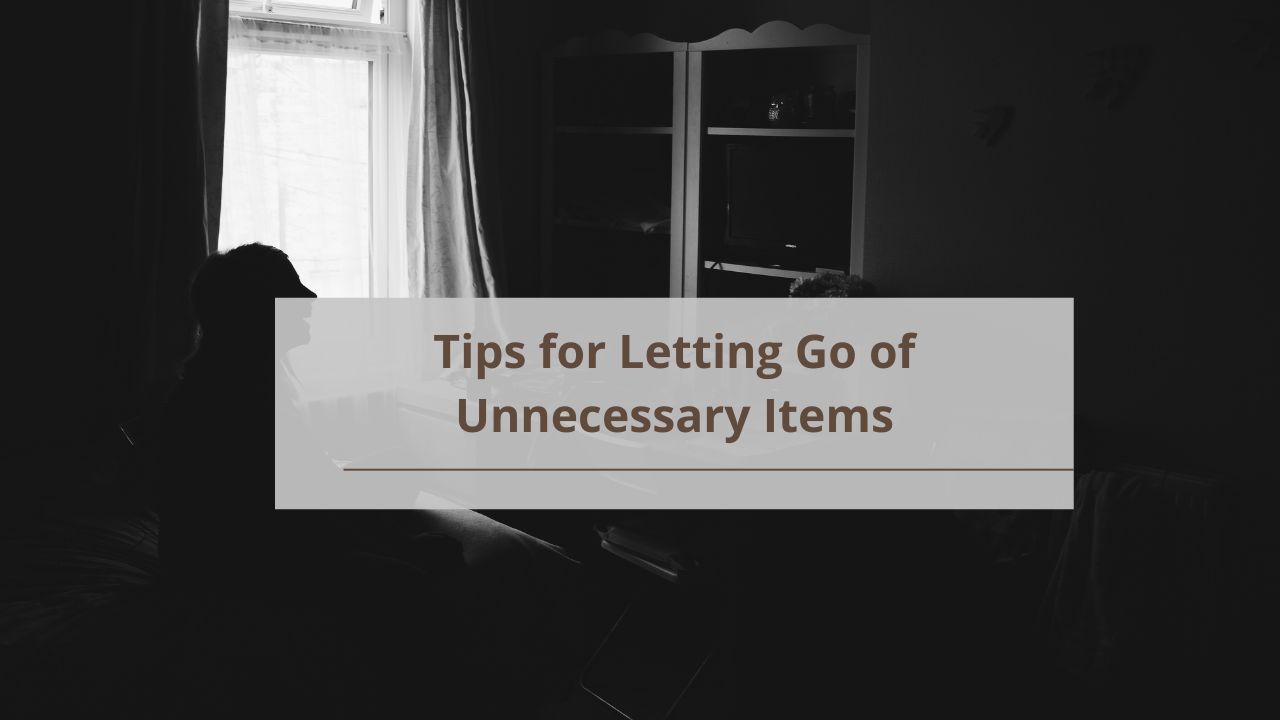Letting go of unnecessary items can be a transformative process, leading to a more organized and stress-free living environment. However, emotional attachments and practical concerns often make it challenging to part with possessions. This guide provides practical tips and strategies to help you effectively declutter and embrace a more minimalist lifestyle.
Understanding Emotional Attachments
Recognizing Emotional Attachments
Identifying Items with Sentimental Value: We all have items that hold special memories, from childhood toys to family heirlooms. Acknowledge these sentimental attachments to understand why you may find it hard to let go.
Addressing Feelings of Guilt: It’s common to feel guilty about discarding items, especially if they were gifts or inherited. Recognize that holding onto everything can lead to clutter and stress, and it’s okay to let go of items that no longer serve you.
Strategies for Overcoming Attachments
Practical Approaches to Letting Go: Consider the practicality of each item. If it no longer serves a purpose or fits into your current lifestyle, it may be time to let it go. Focus on the space and peace of mind you’ll gain rather than the item itself.
Creating a Memory Box: For items with sentimental value, create a memory box. Select a few cherished items to keep in the box, and let go of the rest. This way, you preserve memories without holding onto everything.
Practical Tips for Decluttering
Assessing Value and Usefulness
Evaluating the Functionality of Items: Assess whether each item in your home serves a functional purpose. If it’s broken, outdated, or unused, it might be time to part with it.
Determining If Items Serve a Purpose: Consider if an item contributes to your daily life or enhances your space. Items that no longer add value should be evaluated for disposal.
Setting Clear Goals
Defining What to Keep and What to Discard: Set specific goals for what you want to keep and what you want to discard. This can help streamline the decluttering process and make decisions easier.
Implementing a Decluttering Plan: Create a plan for decluttering each room or category of items. This can include timelines, checklists, and specific areas to focus on.
Effective Sorting Techniques
Using the Four-Box Method
Sorting Items into Keep, Donate, Sell, and Trash: This method involves sorting items into four categories: keep, donate, sell, and trash. This approach simplifies decision-making and ensures that items are handled appropriately.
Benefits of the Four-Box Method: It helps to organize the decluttering process, making it easier to see what’s left and what needs to be done with each item.
Applying the Marie Kondo Method
Focusing on Joy and Utility: Marie Kondo’s method emphasizes keeping only items that “spark joy” or are useful. Evaluate each item based on these criteria to simplify the decluttering process.
Steps in the KonMari Method: Follow the KonMari method’s steps: gather all items in a category (e.g., clothing), evaluate each item, and keep only those that bring joy or serve a purpose.
Overcoming Common Hurdles
Dealing with Sentimental Items
Strategies for Emotional Detachment: Practice detaching emotionally from items by focusing on the memories rather than the physical objects. Consider taking photos of sentimental items before letting them go.
Alternatives to Keeping Items: Donate items to a charity or pass them on to family members who might appreciate them. This way, the items can still bring joy to others.
Managing Guilt and Anxiety
Addressing Feelings of Wastefulness: Remind yourself that decluttering is about making space for what truly matters. Letting go of items you no longer use benefits both your space and mental well-being.
Tips for Reducing Anxiety: Take decluttering one step at a time. Start with small areas and gradually tackle larger ones to avoid feeling overwhelmed.
Creating a Sustainable Decluttering Routine
Implementing Daily Habits
Regularly Reviewing and Reassessing Items: Make decluttering a regular habit by periodically reviewing your belongings. This helps to keep clutter in check and prevents accumulation.
Keeping Clutter in Check: Develop habits for maintaining organization, such as tidying up daily or weekly, to ensure that clutter doesn’t build up again.
Setting Up Decluttering Challenges
Organizing Fun and Motivational Challenges: Create decluttering challenges to keep the process engaging. For example, tackle one room each month or challenge yourself to get rid of a certain number of items.
Engaging Family or Friends: Involve others in your decluttering journey. This can make the process more enjoyable and provide additional motivation and support.
Conclusion
Letting go of unnecessary items is a crucial step toward creating a more organized and stress-free living space. By understanding emotional attachments, using practical sorting techniques, and implementing a sustainable decluttering routine, you can transform your home and enjoy a clutter-free lifestyle.
FAQs
How can I handle sentimental items I’m emotionally attached to?
Consider creating a memory box for a few cherished items, or take photos of sentimental objects before letting them go. Focus on preserving memories rather than keeping everything.
What are the best ways to decide if an item is worth keeping?
Evaluate the item’s functionality and whether it adds value to your life. If it’s not used regularly or doesn’t serve a purpose, it may be time to let it go.
How do I deal with feelings of guilt about discarding items?
Remember that decluttering is about making space for what truly matters. Reframe your perspective to focus on the benefits of a clutter-free environment.
What are some effective decluttering routines to adopt?
Implement daily or weekly tidying routines, set specific decluttering goals, and regularly review and reassess your belongings to maintain organization.
How can I involve others in my decluttering process?
Engage family or friends by setting up decluttering challenges, assigning tasks, or seeking their support and motivation. Collaborative efforts can make the process more enjoyable and effective


